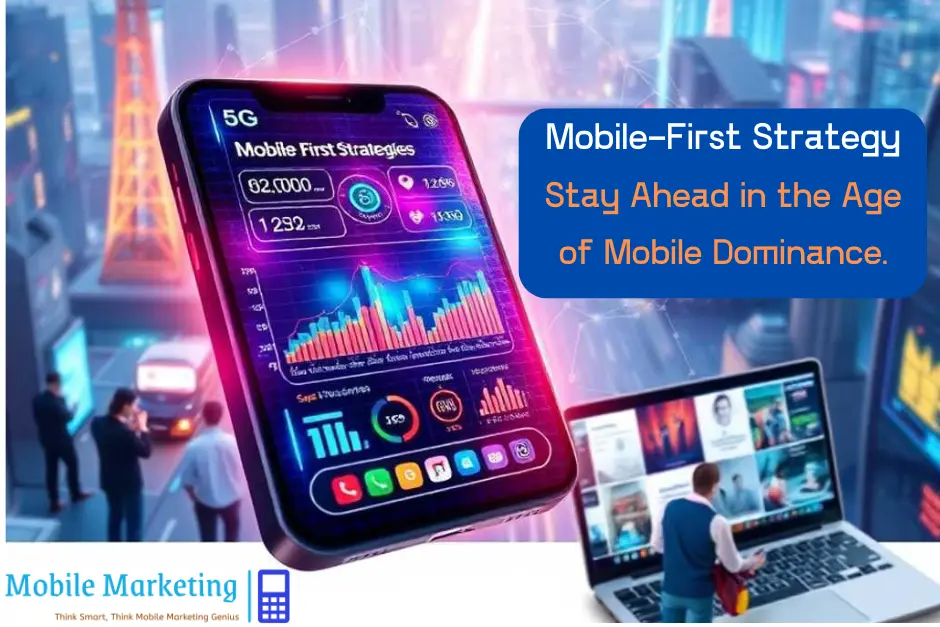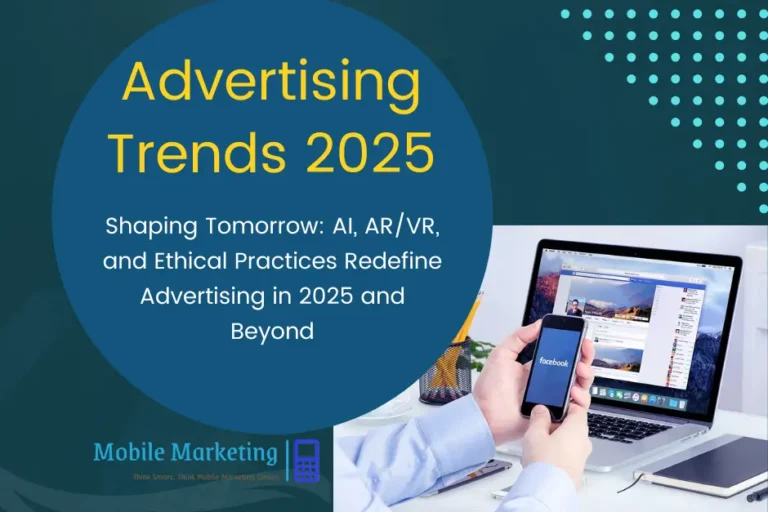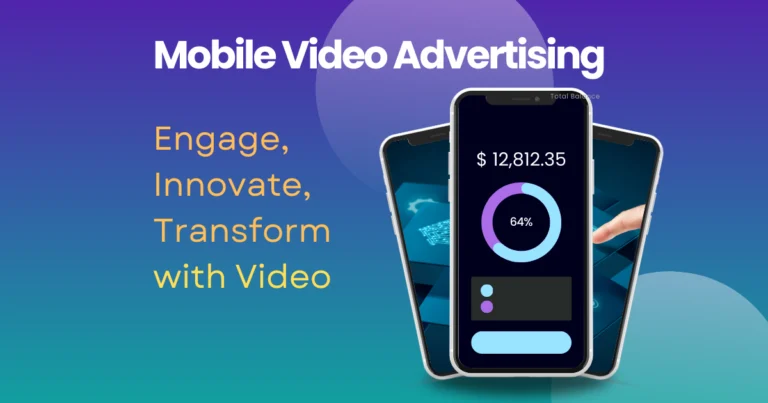The Mobile-First Approach: Staying Competitive in a Mobile-Dominated World

In today’s digital-first era, mobile devices have become the primary gateway for consumers to interact with brands. With over 60% of global web traffic coming from mobile devices, businesses that fail to prioritize mobile users risk losing ground to competitors who are already capitalizing on this shift. Adopting a mobile-first approach is no longer just a best practice—it’s a necessity for staying competitive in a mobile-dominated world. This article explores why the mobile-first approach is critical for businesses in 2025 and provides actionable strategies to help you outperform competitors.
Table of Contents
What is a Mobile-First Approach?
A mobile-first approach means designing and optimizing digital experiences for mobile devices before desktops. Instead of treating mobile as an afterthought, businesses prioritize mobile users from the ground up. This strategy ensures that websites, apps, and marketing campaigns are fast, intuitive, and accessible on smaller screens.
The concept isn’t new, but its importance has grown exponentially. With the rise of 5G networks, voice search, and mobile commerce, businesses must rethink how they engage with their audience. A mobile-first approach isn’t just about responsiveness—it’s about creating meaningful, user-centric experiences that drive engagement and conversions.
The Evolution of Mobile-First
- Early Days: Initially, mobile optimization meant creating a separate mobile site (m.site). This approach often led to inconsistencies and poor user experiences.
- Responsive Design: The introduction of responsive web design (RWD) allowed websites to adapt to different screen sizes. However, this was still a desktop-first approach.
- Mobile-First Era: Today, mobile-first means designing for mobile from the start, ensuring that the core experience is optimized for smaller screens and touch interactions.

Over 60% of global web traffic comes from mobile devices, highlighting the need for businesses to prioritize mobile optimization.
Why the Mobile-First Approach Matters in 2025
1. Mobile Dominates User Behavior
- Over 70% of consumers use mobile devices to browse, shop, and interact with brands. Businesses that ignore mobile optimization are losing customers to competitors who offer seamless mobile experiences.
- Example: A coffee shop with a mobile-optimized site and app can attract nearby customers searching for “coffee near me” and offer quick ordering options, outperforming competitors with clunky desktop-only sites.
2. Google’s Mobile-First Indexing
- Google now prioritizes mobile-friendly websites in its search rankings. If your site isn’t optimized for mobile, you risk losing visibility and traffic to competitors who are already mobile-ready.
- Actionable Tip: Use Google’s Mobile-Friendly Test tool to check your site’s compatibility and fix any issues.
3. The Rise of Mobile Commerce
- By 2025, mobile commerce is expected to account for over 50% of all e-commerce sales. Businesses that ignore mobile optimization miss out on a massive revenue stream, while competitors capture the market.
- Example: Brands like Amazon and Shopify have invested heavily in mobile shopping experiences, offering features like one-click purchases and mobile-exclusive discounts, setting them apart from competitors.
4. Emerging Technologies
- Innovations like Progressive Web Apps (PWAs), Augmented Reality (AR), and AI-powered chatbots are reshaping mobile experiences. Businesses that adopt these technologies early gain a competitive edge.
- Example: IKEA’s AR app allows users to visualize furniture in their homes before buying, enhancing the mobile shopping experience and outperforming traditional retailers.
By 2025, mobile commerce is expected to account for over 50% of all e-commerce sales, making mobile optimization a critical strategy for businesses.
Key Strategies for a Successful Mobile-First Approach
1. Optimize for Speed and Performance
- Mobile users expect pages to load in under 3 seconds. Slow-loading sites lose users to faster competitors.
- Actionable Tips:
- Compress images using tools like TinyPNG.
- Leverage browser caching and Content Delivery Networks (CDNs).
- Minimize JavaScript and CSS files to reduce load times.
- Example: Walmart improved mobile load times by 1 second, resulting in a 2% increase in conversions, outperforming slower competitors.
2. Prioritize Mobile UX Design
- Simplify navigation with thumb-friendly menus and clear calls-to-action (CTAs). Poor UX drives users to competitors with better-designed sites.
- Actionable Tips:
- Use a hamburger menu for compact navigation.
- Ensure CTAs are prominently placed and easy to tap.
- Test your design on multiple devices to ensure consistency.
- Example: Airbnb’s mobile app uses large, tappable buttons and intuitive navigation to enhance user experience, setting it apart from competitors.
3. Embrace Progressive Web Apps (PWAs)
- PWAs combine the best of websites and native apps, offering fast loading times, offline functionality, and push notifications. Early adopters gain a competitive edge.
- Example: Companies like Starbucks and Pinterest have seen significant boosts in engagement after adopting PWAs, outperforming competitors with traditional apps.
- Actionable Tips:
- Use frameworks like React or Angular to build PWAs.
- Implement service workers for offline functionality.
4. Leverage Voice Search Optimization
- With the growing popularity of voice assistants like Siri and Google Assistant, optimize your content for conversational queries. Competitors who ignore voice search risk losing visibility.
- Actionable Tips:
- Use long-tail keywords and natural language.
- Create FAQ pages that answer common voice search queries.
- Example: Domino’s Pizza optimized for voice search, allowing users to order pizza via voice commands, outperforming competitors with traditional ordering systems.
5. Invest in Mobile-First Marketing
- Social Media: Platforms like Instagram, TikTok, and Facebook are inherently mobile-first. Create short-form videos, shoppable posts, and interactive content to engage users.
- SMS Marketing: With open rates exceeding 90%, SMS is a powerful tool for reaching mobile users directly.
- Location-Based Marketing: Use geofencing and beacon technology to deliver personalized offers to users based on their location.
- Example: A retail store can send a push notification with a discount code when a customer enters a nearby mall, outperforming competitors who rely on generic ads.

AI-driven personalization can increase conversion rates by up to 30%, making it a key technology for mobile-first strategies.
Measuring Success in a Mobile-First Strategy
To ensure your mobile-first approach is effective, track these key metrics:
- Mobile Traffic: Monitor the percentage of visitors coming from mobile devices.
- Bounce Rate: A high bounce rate may indicate poor mobile usability.
- Conversion Rate: Measure how well mobile users complete desired actions (e.g., purchases, sign-ups).
- Page Load Speed: Use tools like Google Lighthouse to assess performance.
- App Downloads and Retention: If you have a mobile app, track downloads, active users, and retention rates.
Tools for Tracking Success
- Google Analytics: Set up mobile-specific goals and track user behavior.
- Heatmaps: Use tools like Hotjar to visualize how users interact with your mobile site.
- A/B Testing: Test different mobile layouts and features to see what works best.
Challenges and Solutions
1. Cross-Device Compatibility
- Challenge: Ensuring a seamless experience across devices can be complex.
- Solution: Use responsive design frameworks like Bootstrap and test on multiple devices.
2. Balancing Design and Performance
- Challenge: Heavy visuals can slow down mobile sites.
- Solution: Optimize images and use lazy loading to prioritize content above the fold.
3. Keeping Up with Trends
- Challenge: Mobile technology evolves rapidly.
- Solution: Stay informed by following industry blogs, attending webinars, and experimenting with new tools.
The Future of the Mobile-First Strategy
As we look ahead to 2025 and beyond, the mobile-first strategy will continue to evolve. Emerging technologies like AI, AR/VR, and wearable devices will create new opportunities for businesses to engage mobile users. By adopting a mobile-first mindset today, you can future-proof your business and stay ahead of the competition.
Emerging Trends to Watch
- AI-Powered Personalization: AI will enable hyper-personalized mobile experiences, from tailored recommendations to predictive search.
- Wearable Integration: Smartwatches and AR glasses will expand the definition of “mobile,” requiring new design and marketing strategies.
- Sustainability: Mobile-first design will increasingly focus on reducing energy consumption and carbon footprint.
Conclusion
In a world where mobile devices dominate how consumers interact with brands, the mobile-first approach is no longer optional—it’s a necessity for staying competitive. By prioritizing mobile experiences, optimizing for speed and performance, and embracing emerging technologies, businesses can outperform competitors, capture new markets, and future-proof their success. The time to act is now. Start implementing a mobile-first strategy today and position your business for long-term growth.
Ready to stay competitive in a mobile-dominated world? Contact us today to learn how we can help you optimize for mobile and outperform your competitors in 2025.
FAQ: Mobile-First Approach
1. What is a mobile-first approach?
- Answer:
A mobile-first approach means designing and optimizing digital experiences for mobile devices before desktops. It prioritizes mobile users by ensuring websites, apps, and marketing campaigns are fast, intuitive, and accessible on smaller screens.
2. Why is a mobile-first approach important in 2025?
- Answer:
With over 60% of global web traffic coming from mobile devices, businesses that ignore mobile optimization risk losing customers to competitors. Additionally, Google’s mobile-first indexing prioritizes mobile-friendly sites, and mobile commerce is expected to account for over 50% of all e-commerce sales by 2025.
3. What are the key technologies supporting a mobile-first approach?
- Answer:
The top technologies include:- Progressive Web Apps (PWAs) for fast, app-like experiences.
- Accelerated Mobile Pages (AMP) for faster loading times.
- Artificial Intelligence (AI) for personalized user experiences.
- 5G Technology for faster connectivity and lower latency.
- Augmented Reality (AR) and Virtual Reality (VR) for immersive mobile experiences.
4. How can businesses measure the success of a mobile-first strategy?
- Answer:
Key metrics to track include:- Mobile Traffic: Percentage of visitors from mobile devices.
- Bounce Rate: Indicates mobile usability issues.
- Conversion Rate: Measures how well mobile users complete desired actions.
- Page Load Speed: Use tools like Google Lighthouse to assess performance.
- App Downloads and Retention: For businesses with mobile apps.
5. What are the challenges of adopting a mobile-first approach?
- Answer:
Common challenges include:- Cross-Device Compatibility: Ensuring seamless experiences across devices.
- Balancing Design and Performance: Heavy visuals can slow down mobile sites.
- Keeping Up with Trends: Mobile technology evolves rapidly, requiring continuous learning and adaptation.
Solutions include using responsive design frameworks, optimizing images, and staying informed about industry trends.






